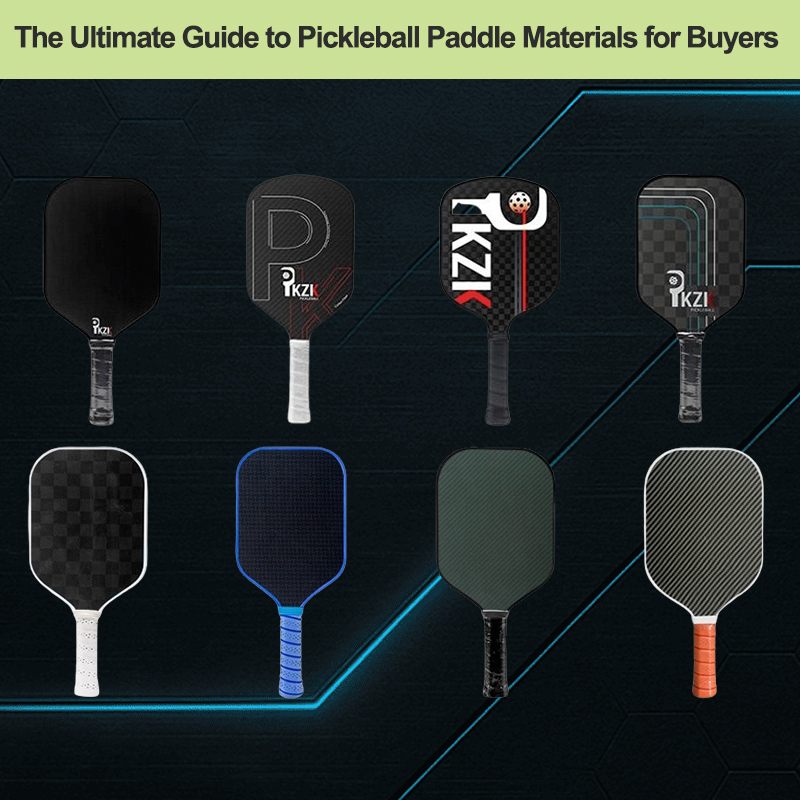
Giới thiệu về Vật liệu vợt Pickleball
Hiểu được các vật liệu được sử dụng trong vợt pickleball là rất quan trọng đối với các công ty mua hàng tồn kho. Vật liệu vợt ảnh hưởng trực tiếp đến sự hài lòng, hiệu suất và lòng trung thành lâu dài của khách hàng. Hướng dẫn chi tiết này đi sâu vào các chi tiết cụ thể của từng loại vật liệu, nêu rõ ưu điểm, hạn chế và danh mục người chơi phù hợp.
Vật liệu mái chèo là một trong những đặc điểm quan trọng nhất của bất kỳ mái chèo pickleball nào. Nó ảnh hưởng đến cảm giác khi cầm mái chèo, mức độ mạnh mẽ hoặc khả năng kiểm soát mà nó mang lại, độ bền của nó và thậm chí là giá cả của nó.
Đối với các công ty mua sắm, hiểu biết về vật liệu giúp lựa chọn đúng loại mái chèo để đáp ứng các nhu cầu khác nhau của khách hàng. Người mới bắt đầu thường muốn thứ gì đó giá cả phải chăng và dễ sử dụng. Người chơi cạnh tranh có thể tìm kiếm mái chèo nhẹ với hiệu suất cao. Người cao tuổi có thể cần mái chèo giảm rung và tạo cảm giác thoải mái.
Chất liệu phù hợp giúp người chơi chơi tốt hơn và khiến họ có nhiều khả năng giới thiệu hoặc mua lại sản phẩm của bạn.
Vật liệu vợt Pickleball Graphite
Than chì là gì?
Than chì là vật liệu nhẹ và cứng được sử dụng trong nhiều thiết bị hiệu suất cao vợt bóng chày. Nó được áp dụng như một lớp bề mặt mỏng trên lõi, thường được làm từ các vật liệu như tổ ong polypropylene. Mặc dù lớp than chì cực kỳ mỏng—dưới một milimét—nhưng nó mang lại cảm giác sắc nét, nhạy bén.
Vợt bóng chày graphite đặc biệt được ưa chuộng bởi những người chơi dựa vào độ chính xác, phản xạ nhanh và kiểm soát bóng. Độ cứng của graphite có nghĩa là những cú đánh chính xác hơn với ít mất năng lượng hơn.
Ưu điểm của vợt Pickleball Graphite
- Nhẹ: Giúp cho việc vung và điều khiển mái chèo dễ dàng, đặc biệt là trong những pha trao đổi bóng nhanh ở lưới.
- Kiểm soát tuyệt vời: Lý tưởng để đặt bóng chính xác vào vị trí bạn muốn.
- Bề mặt phản ứng: Giúp người chơi cảm thấy kết nối với bóng khi tiếp xúc, cải thiện hiệu suất chơi bóng mềm.
- Được người chơi nâng cao tin tưởng: Một tài liệu hữu ích cho nhiều người chơi có kinh nghiệm và chuyên nghiệp.
Nhược điểm của vợt Pickleball Graphite
- Ít điện năng hơn: Có thể không tạo ra lực đánh tự nhiên mạnh như vợt sợi thủy tinh hoặc composite.
- Chi phí cao hơn: Thông thường có giá ở mức trung bình đến cao.
- Không lý tưởng cho người mới bắt đầu: Cảm giác phản hồi có thể quá cứng đối với người chơi mới cần sự dễ chịu hơn.
Tốt nhất cho:
Người chơi ở mức trung cấp đến cao cấp ưu tiên khả năng kiểm soát, tốc độ và sự tinh tế hơn là sức mạnh thô.
Vật liệu vợt Pickleball tổng hợp
Hiểu về vật liệu tổng hợp
Vợt bóng chày composite được làm bằng hỗn hợp vật liệu—thường là sợi thủy tinh, sợi carbon hoặc mặt polyme—kết hợp với lõi làm bằng nhôm, Nomex hoặc tổ ong polypropylene. Thuật ngữ “composite” chỉ đơn giản có nghĩa là hỗn hợp, được thiết kế để mang đến cho người chơi hiệu suất toàn diện.
Những mái chèo pickleball này được biết đến với sự cân bằng giữa quyền lực và kiểm soát, khiến chúng trở thành một trong những lựa chọn phổ biến nhất trên thị trường hiện nay. Chúng đặc biệt được đánh giá cao vì tính linh hoạt và sức hấp dẫn rộng rãi ở mọi cấp độ kỹ năng.
Ưu điểm của vợt Pickleball Composite
- Hiệu suất cân bằng: Mang lại sự kết hợp tốt giữa sức mạnh và khả năng kiểm soát, phù hợp cho lối chơi toàn diện.
- Bề mặt thân thiện với việc quay: Bề mặt có kết cấu trên hầu hết các vợt bóng chày composite giúp tạo ra nhiều lực xoáy hơn cho quả bóng.
- Bền và chắc chắn: Được thiết kế bền bỉ với vật liệu mặt chắc chắn có thể chịu được việc sử dụng thường xuyên và mạnh.
- Giá cả phải chăng hơn Graphite: Có nhiều mức giá khác nhau, thường rẻ hơn so với vợt graphite có hiệu suất tương tự.
Hạn chế của vợt Pickleball Composite
- Nặng hơn một chút: Vợt bóng chày composite có thể nặng hơn vợt graphite, điều này có thể làm giảm thời gian phản ứng ở lưới.
- Độ chính xác thấp hơn: Mặc dù tạo ra lực và độ xoáy tốt, nhưng chúng có thể không mang lại khả năng kiểm soát chặt chẽ như vợt graphite hoặc vợt sợi carbon.
Tốt nhất cho:
Người chơi mới bắt đầu đến nâng cao muốn có một cây vợt pickleball đa năng vừa có lực đánh mạnh vừa có khả năng kiểm soát đáng tin cậy. Cũng lý tưởng cho những người chơi thích tăng độ xoáy cho cú đánh của mình.
Vật liệu vợt Pickleball bằng sợi carbon
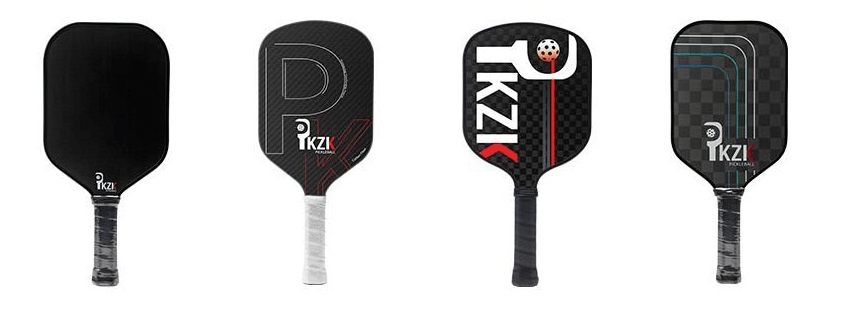
Sợi carbon là một trong những vật liệu tiên tiến nhất được sử dụng trong hiện đại vợt bóng chày. Được biết đến là cả hai mạnh mẽ và nhẹ, đây là sự lựa chọn hàng đầu trong số những người chơi có tính cạnh tranh và kinh nghiệm, coi trọng hiệu suất, tính nhất quán và khả năng kiểm soát.
Điều gì làm cho sợi Carbon trở nên độc đáo?
Sợi carbon được tạo ra bằng cách đan chặt các sợi carbon siêu mỏng, sau đó đặt chúng trong nhựa cứng. Điều này tạo ra một vật liệu cực kỳ cứng và chống mài mòn—hoàn hảo cho bề mặt mái chèo cần giữ nguyên theo thời gian trong khi vẫn tạo ra cú đánh sạch và có kiểm soát.
Khi được sử dụng trên vợt bóng chày, sợi carbon mang lại bề mặt đánh rất nhất quán. Điều đó có nghĩa là người chơi có thể mong đợi quả bóng phản ứng theo cùng một cách, bất kể nó chạm vào đâu trên mặt vợt. Sự nhất quán này giúp ích cho vị trí và kiểm soát bóng, đặc biệt là trong các trò chơi có nhịp độ nhanh hoặc trên lưới.
Tại sao nó quan trọng với người mua
Đối với các công ty mua vợt, sợi carbon là vật liệu thông minh để đưa vào danh mục sản phẩm của bạn. Nó hấp dẫn những người chơi nghiêm túc, những người sẵn sàng đầu tư vào thiết bị giúp họ có lợi thế trên sân.
Vợt bóng chày sợi carbon thường:
- Nhẹ, giúp chúng dễ dàng điều khiển.
- Bền bỉ, giảm thiểu việc trả lại hàng và khiếu nại của khách hàng.
- Hướng đến hiệu suất, mang lại khả năng kiểm soát mạnh mẽ và cảm ứng đáng tin cậy.
Vì cảm giác cao cấp và chất lượng xây dựng, vợt pickleball sợi carbon thường có giá cao hơn. Nhưng đối với nhiều người chơi, lợi ích biện minh cho chi phí—đặc biệt là khi tìm kiếm hiệu suất lâu dài.
Những điểm cần cân nhắc
- Không phải tất cả các mái chèo sợi carbon đều được tạo ra như nhau—một số sử dụng lớp carbon một phần, trong khi những loại khác có bề mặt hoàn toàn bằng carbon.
- Chúng có thể không cung cấp nhiều lực tự nhiên như vợt composite hoặc vợt sợi thủy tinh, loại vợt mà một số người chơi hung hăng ưa chuộng.
- Bề mặt cứng của chúng có thể tạo cảm giác “cứng” đối với những người chơi quen sử dụng vật liệu mềm hơn.
Tóm tắt cho các công ty mua sắm
Vợt bóng chày sợi carbon là lý tưởng cho khách hàng trung cấp đến cao cấp muốn độ chính xác và cảm giác nhất quán. Việc trang bị vợt bóng chày sợi carbon có thể giúp doanh nghiệp của bạn thu hút ngày càng nhiều người chơi nghiêm túc, những người coi trọng chất lượng và kiểm soát chi phí hơn.
Những cây vợt này là sự bổ sung tuyệt vời cho bất kỳ dòng sản phẩm cao cấp nào và mang lại giá trị lâu dài cho cả người chơi và nhà bán lẻ.
Vật liệu vợt bóng chày Kevlar Pickleball
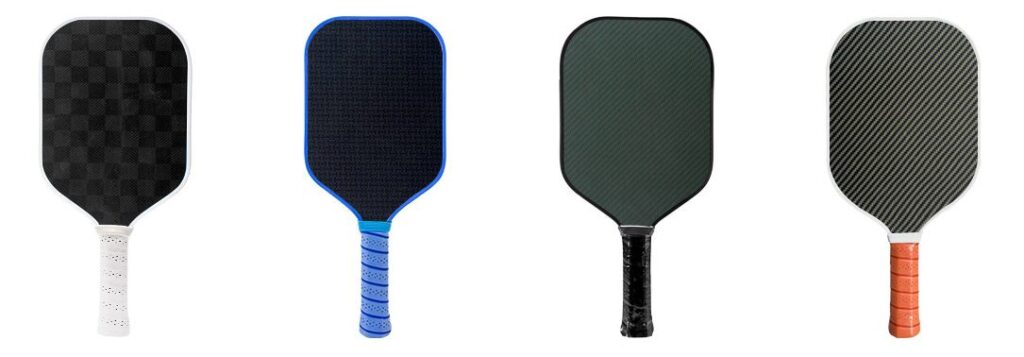
Kevlar là một loại sợi tổng hợp có độ bền cao được biết đến nhiều nhất khi sử dụng trong áo giáp và các ứng dụng hàng không vũ trụ. Trong thế giới vợt bóng chày, Kevlar cung cấp sự kết hợp độc đáo của độ bền, kiểm soát độ rung và công suất, khiến nó trở thành lựa chọn hấp dẫn cho những người chơi muốn có một cây vợt có thể chịu được va đập nhưng vẫn hoạt động tốt.
Kevlar là gì và tại sao lại sử dụng nó?
Kevlar mạnh hơn thép gấp năm lần về trọng lượng. Khi được sử dụng trong mặt vợt pickleball hoặc như một phần của thiết kế composite nhiều lớp, nó cải thiện đáng kể độ bền của vợt. Nó đặc biệt tốt ở hấp thụ tác động và giảm rung động, giúp bảo vệ bàn tay, cổ tay và khuỷu tay của người chơi trong khi chơi.
Điều này làm cho Vợt bóng chày Kevlar một lựa chọn tuyệt vời cho người chơi lớn tuổi, vận động viên dễ bị chấn thương hoặc bất kỳ ai chơi thường xuyên và muốn có sự thoải mái và độ tin cậy lâu dài.
Những gì Kevlar Paddles cung cấp cho khách hàng của bạn
Đối với doanh nghiệp của bạn, việc thêm mái chèo Kevlar vào hàng tồn kho của bạn có nghĩa là cung cấp thứ gì đó hiệu suất cao và thực tế. Những mái chèo này nổi bật vì một số lý do chính:
- Giảm xóc: Giảm rung động khi va chạm, mang lại cảm giác mềm mại hơn giúp giảm thiểu căng thẳng cho khớp.
- Độ bền: Được thiết kế để bền lâu—Kevlar có khả năng chống mài mòn và hư hỏng cực kỳ tốt.
- Hiệu suất mạnh mẽ: Mặc dù Kevlar không phải là vật liệu nhẹ nhất, nhưng nó tăng thêm sức mạnh cho cú đánh và hoạt động tốt dưới áp lực.
Những người chơi có cú đánh mạnh hoặc chơi ngoài trời trong nhiều điều kiện khác nhau sẽ đánh giá cao khả năng phục hồi của vợt Kevlar.
Những điều cần lưu ý
- Mái chèo Kevlar thường được pha trộn với các vật liệu khác như sợi carbon hoặc sợi thủy tinh để tinh chỉnh hiệu suất.
- Chúng thường nặng hơn một chút so với vợt graphite hoặc chỉ làm bằng carbon, có thể không phù hợp với những người chơi dựa vào tốc độ và chuyển động tay nhanh.
- Do chi phí sản xuất cao nên chúng thường được định giá theo tầm trung đến cao.
Tóm tắt cho các công ty mua sắm
Vợt bóng chày Kevlar lấp đầy một thị trường ngách có giá trị. Chúng hoàn hảo cho những người chơi muốn có một mái chèo bền hơn, mang lại cảm giác mềm mại và giúp giảm căng thẳng về mặt thể chất. Mặc dù chúng có thể không phải là mái chèo nhẹ nhất hoặc rẻ nhất hiện có, nhưng chúng mang lại giá trị lớn về mặt sự thoải mái, độ bền và khả năng chơi tổng thể.
Việc trang bị mái chèo Kevlar có thể giúp doanh nghiệp của bạn tiếp cận được những người chơi đang tìm kiếm thứ gì đó mạnh mẽ hơn và dễ tha thứ hơn, đặc biệt là ở thị trường giải trí dành cho người cao tuổi và cạnh tranh.
Vật liệu vợt Pickleball lai Titan-Carbon

Khi công nghệ mái chèo phát triển, các nhà sản xuất đang đẩy mạnh ranh giới với sự kết hợp vật liệu tiên tiến. Một trong những phát triển thú vị nhất trong thiết kế mái chèo cao cấp là hỗn hợp titan-cacbon.
Sự kết hợp vật liệu này mang lại sức mạnh vô song của titan Và độ chính xác nhẹ của sợi carbon, tạo ra một mái chèo mang lại cả hai sức mạnh và sự tinh tếĐối với các công ty mua hàng muốn cung cấp sản phẩm chất lượng cao hoặc nâng cao dịch vụ cung cấp sản phẩm của mình thì vật liệu lai này mang đến một cơ hội lớn.
Sự pha trộn vật liệu được thiết kế cho hiệu suất
Bản thân titan cực kỳ bền và mang lại tính toàn vẹn về mặt cấu trúc khó có thể đánh bại. Khi kết hợp với sợi carbon trong cấu trúc mặt vợt, nó giúp tạo ra bề mặt chơi chắc chắn nhưng nhanh nhẹn. Người chơi được hưởng lợi từ khả năng đánh những cú đánh mạnh hơn mà không mất đi khả năng kiểm soát.
Kết quả? Một cây vợt pickleball tạo cảm giác mạnh mẽ khi đánh bóng nhưng vẫn phản ứng tốt khi chạm nhẹ hơn như cú đánh thả bóng hoặc cú đánh bóng ngắn. Sự cân bằng này rất hiếm và rất đáng mơ ước—đặc biệt là ở các cấp độ chơi cạnh tranh.
Nhắm mục tiêu vào phân khúc khách hàng có giá trị cao, ngách
Vợt bóng chày lai titan-carbon không dành cho tất cả mọi người—và đó là điều tốt.
Những mái chèo này thường có giá là đầu trên của thị trường, khiến chúng phù hợp nhất cho:
- Người chơi nâng cao muốn có cả khả năng kiểm soát và sức mạnh bổ sung
- Các vận động viên chơi Pickleball thường xuyên và muốn có độ bền lâu dài
- Khách hàng có ý thức về thương hiệu hoặc đang tìm kiếm thiết bị chuyên nghiệp
Theo quan điểm kinh doanh, những sản phẩm này lý tưởng cho dòng cao cấp hoặc hàng tồn kho có biên lợi nhuận cao nhắm đến những người chơi sẵn sàng đầu tư vào chất lượng.
Hãy xem xét các sự đánh đổi
Tất nhiên, hiệu suất hàng đầu đi kèm một số cân nhắc sau:
- Chi phí vật liệu và sản xuất cao hơn, nghĩa là giá bán lẻ cũng cao hơn.
- Những mái chèo này có thể không hấp dẫn người mới bắt đầu hoặc người mua chú trọng vào giá trị.
- Vì chúng tương đối mới nên hiện nay có ít thương hiệu cung cấp chúng, khiến việc lập kế hoạch cung ứng trở nên quan trọng.
Suy nghĩ cuối cùng cho người mua
Nếu doanh nghiệp của bạn đang nhắm đến những người chơi pickleball nghiêm túc hoặc có tính cạnh tranh, việc bổ sung vợt pickleball bằng titan—đặc biệt là những vợt được chế tạo bằng cấu trúc lai titan-carbon—có thể giúp dòng sản phẩm của bạn trở nên khác biệt. Những mái chèo này cung cấp sự kết hợp hiếm có giữa thiết kế công nghệ cao, độ bền lâu dài và hiệu suất ở cấp độ ưu tú. Ngay cả việc cung cấp một lựa chọn nhỏ trong danh mục này cũng có thể nâng cao dịch vụ cao cấp của bạn, thu hút người chơi có kinh nghiệm và khuyến khích mua hàng có giá trị cao hơn từ nhóm khách hàng hiện tại của bạn.
Vật liệu lõi tổ ong Polypropylene
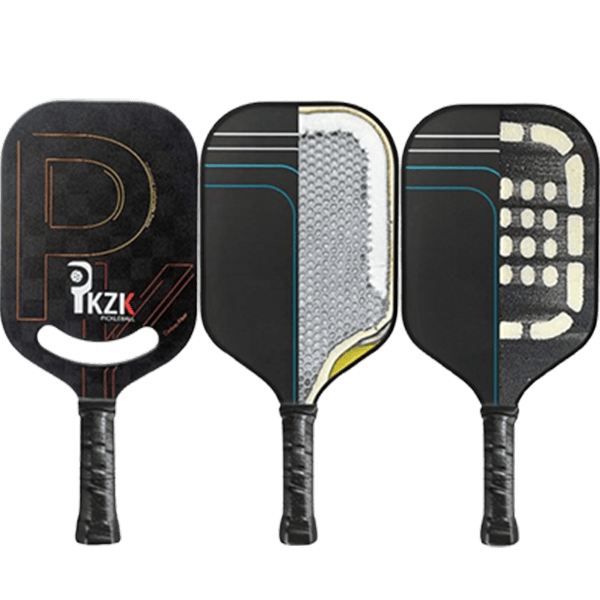
Trong số tất cả các vật liệu cốt lõi được sử dụng trong vợt bóng chày, tổ ong polypropylene đã trở thành tiêu chuẩn của ngành công nghiệp—và vì lý do chính đáng. Nó cung cấp sự cân bằng hiệu quả cao sự thoải mái nhẹ nhàng, hấp thụ sốc và hiệu suất ổn định, hấp dẫn nhiều đối tượng người chơi, từ người mới bắt đầu cho đến những người chơi dày dạn kinh nghiệm.
Polypropylene là một loại nhựa mềm, dẻo được sắp xếp theo cấu trúc tổ ong. Thiết kế này phân bổ đều lực tác động và giúp hấp thụ rung động trong khi chơi, giúp cổ tay và khuỷu tay của người chơi dễ chịu hơn. Kiểu tổ ong cũng giúp mái chèo nhẹ mà không làm mất đi sự ổn định của lõi.
Tại sao lõi Polypropylene chiếm lĩnh thị trường
Sự phổ biến của lõi tổ ong polypropylene có liên quan trực tiếp đến khả năng chơi và tính linh hoạt của chúng. Những lõi này hoạt động tốt trong nhiều loại mái chèo, bao gồm cả mái chèo composite cấp độ đầu vào và nâng cao vợt pickleball chịu nhiệt—được xây dựng bằng nhiệt và áp suất để tăng cường độ bền của kết cấu.
Trong các mô hình mới hơn như vợt pickleball gen 3 Và vợt pickleball gen 4, lõi polypropylene thường được ghép với mặt gậy bằng sợi carbon hoặc sợi thủy tinh. Sự kết hợp này mang đến cho người chơi cảm giác mềm mại cần thiết cho những cú đánh tinh tế trong khi vẫn cho phép phản hồi đủ cho những cú đánh mạnh mẽ.
Những thế hệ mái chèo nâng cấp này thường dựa vào độ bền và chất lượng giảm rung lõi polypropylene để đáp ứng nhu cầu về hiệu suất của các cầu thủ thi đấu—đặc biệt là trong các trận đấu diễn ra nhanh, nơi độ chính xác và sự thoải mái đều quan trọng như nhau.
Điều này có ý nghĩa gì đối với người mua mái chèo
Đối với các công ty mua hàng, mái chèo được chế tạo bằng lõi tổ ong polypropylene là sản phẩm không thể thiếu trong bất kỳ kho hàng toàn diện nào. Chúng hấp dẫn:
- Người chơi giải trí và câu lạc bộ đang tìm kiếm sự thoải mái và kiểm soát
- Người cao tuổi hoặc người dùng dễ bị thương cần giảm độ rung của mái chèo
- Người chơi cạnh tranh sử dụng vợt pickleball chịu nhiệt để chơi giải đấu
- Người mua nâng cấp từ một vợt pickleball gen 3 để phản ứng nhanh hơn vợt pickleball gen 4
Nhờ sự phổ biến rộng rãi, bạn sẽ tìm thấy polypropylen ở nhiều mức giá mái chèo khác nhau, từ các sản phẩm chú trọng vào giá trị đến các mẫu chuyên nghiệp cao cấp.
Tóm tắt cho Chiến lược mua sắm
Lõi tổ ong polypropylen mang lại sức hấp dẫn rộng rãi, hiệu suất đáng tin cậy và độ bền lâu dài—tất cả các đặc điểm khiến chúng trở thành lựa chọn dễ dàng cho những người lập kế hoạch hàng tồn kho. Cho dù trọng tâm của bạn là các bó dành cho người mới bắt đầu hay các dây chèo cấp độ chuyên nghiệp, mái chèo có lõi polypropylene là điều cần thiết để duy trì khả năng cạnh tranh trên thị trường ngày nay.
Vật liệu vợt Pickleball bằng nhôm
Có một sự tự tin nhất định khi cầm một mái chèo chắc chắn, đáng tin cậy và được chế tạo có mục đích. Đó chính xác là những gì vợt bóng chày bằng nhôm mang đến sân đấu. Những chiếc vợt này đã có từ lâu hơn một số vật liệu mới hơn trên thị trường, nhưng chúng đã tạo nên một lượng người hâm mộ trung thành—và có lý do chính đáng.
Cốt lõi của những mái chèo này là cấu trúc tổ ong nhôm nhẹ. Mặc dù nhôm là kim loại, nhưng nó không làm tăng thêm trọng lượng quá mức nhờ thiết kế tổ ong, sử dụng vật liệu tối thiểu theo bố cục chiến lược. Kết quả là một mái chèo có cảm giác chắc chắn và ổn định trong khi chơi, với tiếng "bật" rõ ràng khi va chạm.
Nhưng sức hấp dẫn vượt xa cảm giác. Lõi nhôm mang đến cho người chơi âm thanh sắc nét, độ nảy có thể dự đoán được và đủ cấu trúc để tạo ra tốc độ thực sự sau mỗi cú đánh. Dành cho người chơi thích lối chơi nhanh, hung hăng, khả năng phản ứng của lõi nhôm có thể là một lợi thế lớn.
Vị trí của vợt Pickleball nhôm trên thị trường hiện nay
Trong khi các vật liệu mới hơn như polypropylen và lõi lai chiếm ưu thế ở phân khúc cao cấp, vợt bóng chày bằng nhôm vẫn giữ được giá trị, đặc biệt là đối với người mua muốn hoàn thiện danh mục sản phẩm của mình.
Những mái chèo này thường được ưa chuộng trong các bối cảnh thể chế—như trường học, trung tâm giải trí hoặc đội xe cho thuê—nơi độ bền và hiệu suất lặp lại quan trọng hơn trọng lượng vung siêu nhẹ hoặc giảm rung. Chúng cũng là lựa chọn chắc chắn cho những người chơi tập trung vào sức mạnh, thích mặt mái chèo chắc chắn hơn và cảm giác đánh trực tiếp hơn.
Theo quan điểm mua hàng, mái chèo nhôm cung cấp một cách để đa dạng hóa hàng tồn kho của bạn mà không cần kéo dài đến không gian siêu cao cấp. Sự hấp dẫn của chúng nằm ở sức mạnh, cảm giác thỏa mãn và khả năng chịu được việc sử dụng hàng ngày mà không bị cong vênh hoặc mềm mại theo thời gian.
Một số điều cần biết
Tất nhiên, vợt nhôm không hoàn hảo cho tất cả mọi người. Cảm giác cứng hơn của chúng có thể gây khó chịu cho cánh tay trong các trận đấu dài, đặc biệt là đối với những người chơi dễ bị đau khuỷu tay hoặc cổ tay. Chúng cũng có xu hướng ít chạm và tinh tế hơn, điều này có thể khiến những người chơi dựa vào lối chơi lưới mềm hoặc những cú xoay nhẹ nhàng mất hứng thú.
Nói như vậy, chúng có chỗ đứng của mình. Và khi kết hợp với đúng khách hàng—đặc biệt là những người tìm kiếm độ bền, sức mạnh và trải nghiệm đánh bóng đơn giản—chúng hoàn toàn đáp ứng được.
So sánh các vật liệu vợt Pickleball
Khi bạn lựa chọn mái chèo để bán lẻ hoặc phân phối, bạn không chỉ lựa chọn dựa trên mức độ phổ biến mà còn đưa ra quyết định chiến lược dựa trên hiệu suất, loại người chơi và định vị giá. Bảng dưới đây đơn giản hóa các quyết định này bằng cách so sánh các quyết định phổ biến nhất và được yêu cầu nhiều nhất vật liệu vợt pickleball trên các tiêu chí quan trọng nhất đối với người mua và người chơi.
Bảng so sánh vật liệu vợt Pickleball
| Loại vật liệu | Cân nặng | Quyền lực | Điều khiển | Quay | Độ bền | Phạm vi giá | Lý tưởng cho |
| Than chì | Rất nhẹ | Vừa phải | Cao | Cao | Tốt | Trung bình-Cao | Người chơi tập trung vào tốc độ và khả năng kiểm soát |
| Vật liệu tổng hợp (Sợi thủy tinh) | Trung bình | Cao | Vừa phải | Cao | Tốt | Tầm trung | Sử dụng cho mục đích giải trí và câu lạc bộ |
| Sợi Carbon | Ánh sáng | Vừa phải | Rất cao | Cao | Xuất sắc | Cao | Người chơi nâng cao tìm kiếm sự chính xác |
| Kevlar | Trung bình-Nặng | Cao | Vừa phải | Vừa phải | Xuất sắc | Cao | Người dùng tập trung vào sức mạnh hoặc nhạy cảm với chấn thương |
| Titan-Carbon lai | Nhẹ-Trung bình | Rất cao | Cao | Cao | Xuất sắc | Phần thưởng | Người chơi chuyên nghiệp, nâng cấp cao cấp |
| Lõi Polypropylen | Ánh sáng | Vừa phải | Cao | Tốt | Tốt | Thay đổi | Giải pháp cốt lõi cho mọi trình độ kỹ năng |
| Lõi nhôm | Trung bình | Rất cao | Vừa phải | Vừa phải | Xuất sắc | Thấp-Trung bình | Các tổ chức, những người có quyền lực |
Những điểm chính mang tính chiến lược cho người mua
- Than chì và sợi carbon: Thích hợp cho những người chơi có kinh nghiệm, ưu tiên khả năng kiểm soát và cảm giác nhanh nhạy.
- Vật liệu tổng hợp (Sợi thủy tinh): Đa năng và tiết kiệm chi phí; thích hợp để bán với số lượng lớn cho người chơi trung bình hoặc chơi bình thường.
- Kevlar và Titanium-Carbon Hybrids: Vật liệu cao cấp với hiệu suất mạnh mẽ; phù hợp với người chơi có trình độ cao hoặc ngân sách lớn.
- Lõi Polypropylene: Sự lựa chọn cốt lõi của bạn về sự thoải mái, khả năng kiểm soát và phạm vi chèo nhiều tầng.
- Lõi nhôm:Cây chèo bền và cho cảm giác trực tiếp, lý tưởng cho các chương trình ở trường học, cho thuê hoặc các phong cách chơi mạnh mẽ.
Sự phân chia vật liệu rõ ràng này giúp bạn dự trữ thông minh hơn, đảm bảo đáp ứng nhu cầu của người chơi ở mọi trình độ kỹ năng, ngân sách và sở thích chơi.
Phần kết luận
Việc lựa chọn vật liệu có tác động trực tiếp đến cả hai cấu trúc chi phí Và sự hài lòng của khách hàng. Là người mua làm việc với một nhà sản xuất vợt pickleball, việc sắp xếp vật liệu phù hợp với thị trường mục tiêu của bạn là chìa khóa để tối đa hóa lợi nhuận và đáp ứng nhu cầu của người chơi.
Tại Bóng ném PKZK, chúng tôi hướng dẫn các đối tác lựa chọn vật liệu phù hợp để đạt hiệu suất và cân bằng giá cả.
Mỗi loại vật liệu đều có thế mạnh riêng:
- Sợi carbon mang lại khả năng kiểm soát và hiệu suất lâu dài.
- Kevlar giúp giảm tác động và tăng độ bền đáng kể.
- Sợi thủy tinh (composite) cung cấp sức mạnh tuyệt vời và hoàn hảo cho trò chơi toàn diện.
- Mái chèo nhiệt định hình thêm cấu trúc và độ bền cạnh để có hiệu suất ở mức cao.
Bằng cách hiểu cách thức hoạt động của những vật liệu này, bạn có thể chọn được loại vợt phù hợp với nhiều loại người chơi khác nhau, từ người mới bắt đầu đến người chơi chuyên nghiệp.
Tại Bóng ném PKZK, chúng tôi hợp tác chặt chẽ với người mua mái chèo để xây dựng các dòng sản phẩm đáp ứng nhu cầu, hoạt động tốt và hỗ trợ mục tiêu giá của bạn. Cho dù bạn đang đặt hàng số lượng lớn hay tuyển chọn một lựa chọn cao cấp, chúng tôi giúp bạn cung cấp mái chèo mang lại giá trị thực.
Với sự kết hợp vật liệu phù hợp, bạn sẽ mang đến cho người chơi trải nghiệm tốt hơn và giúp doanh nghiệp của bạn có danh tiếng tốt hơn.
Cho phép Bóng ném PKZK giúp bạn mua mái chèo một cách đơn giản, thông minh và thành công.


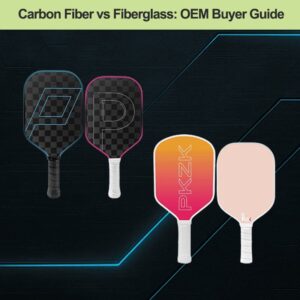
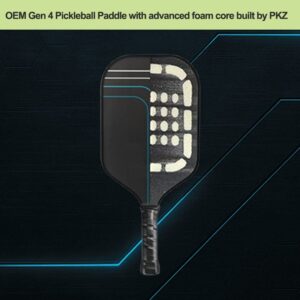
1 bình luận